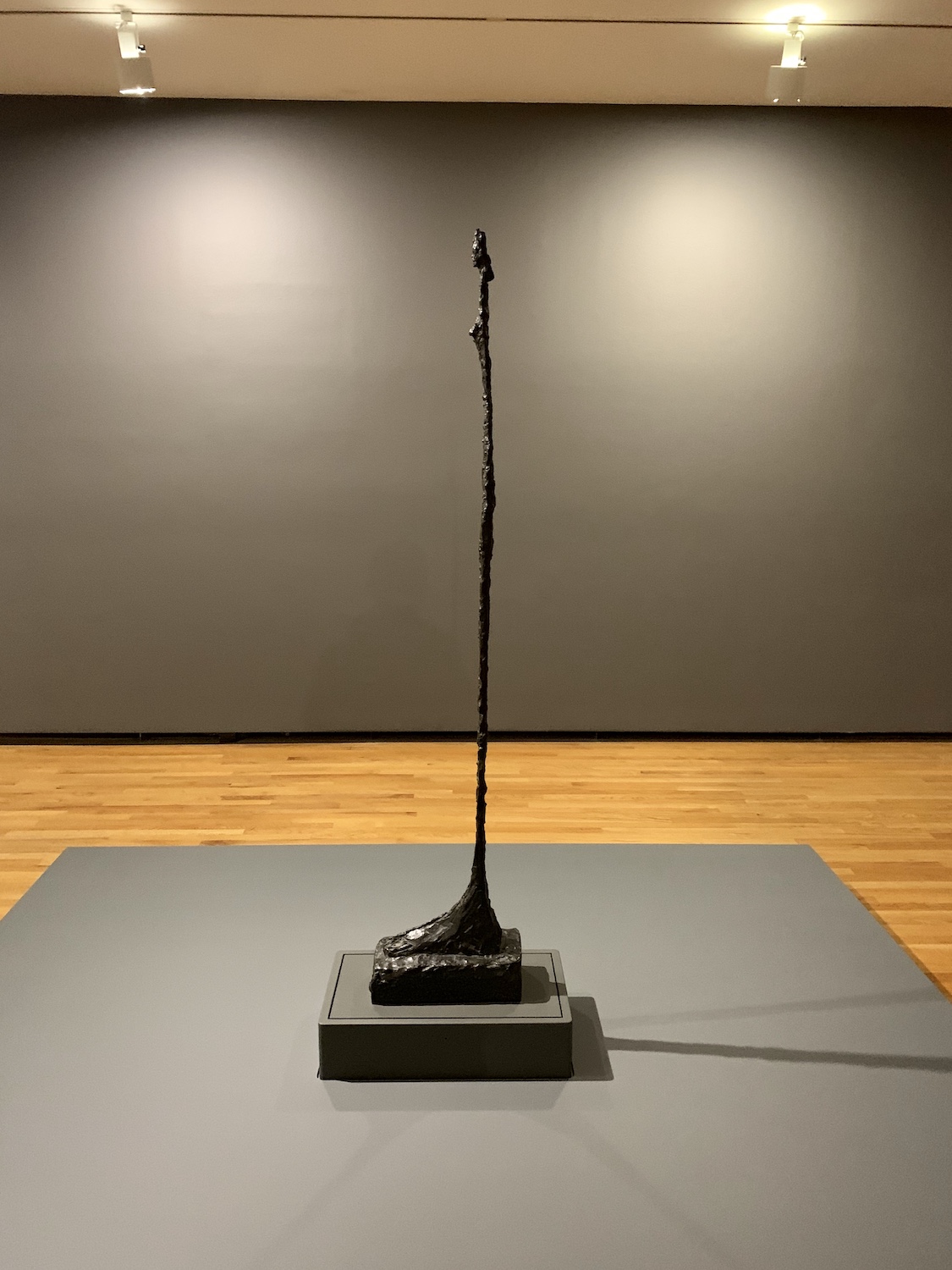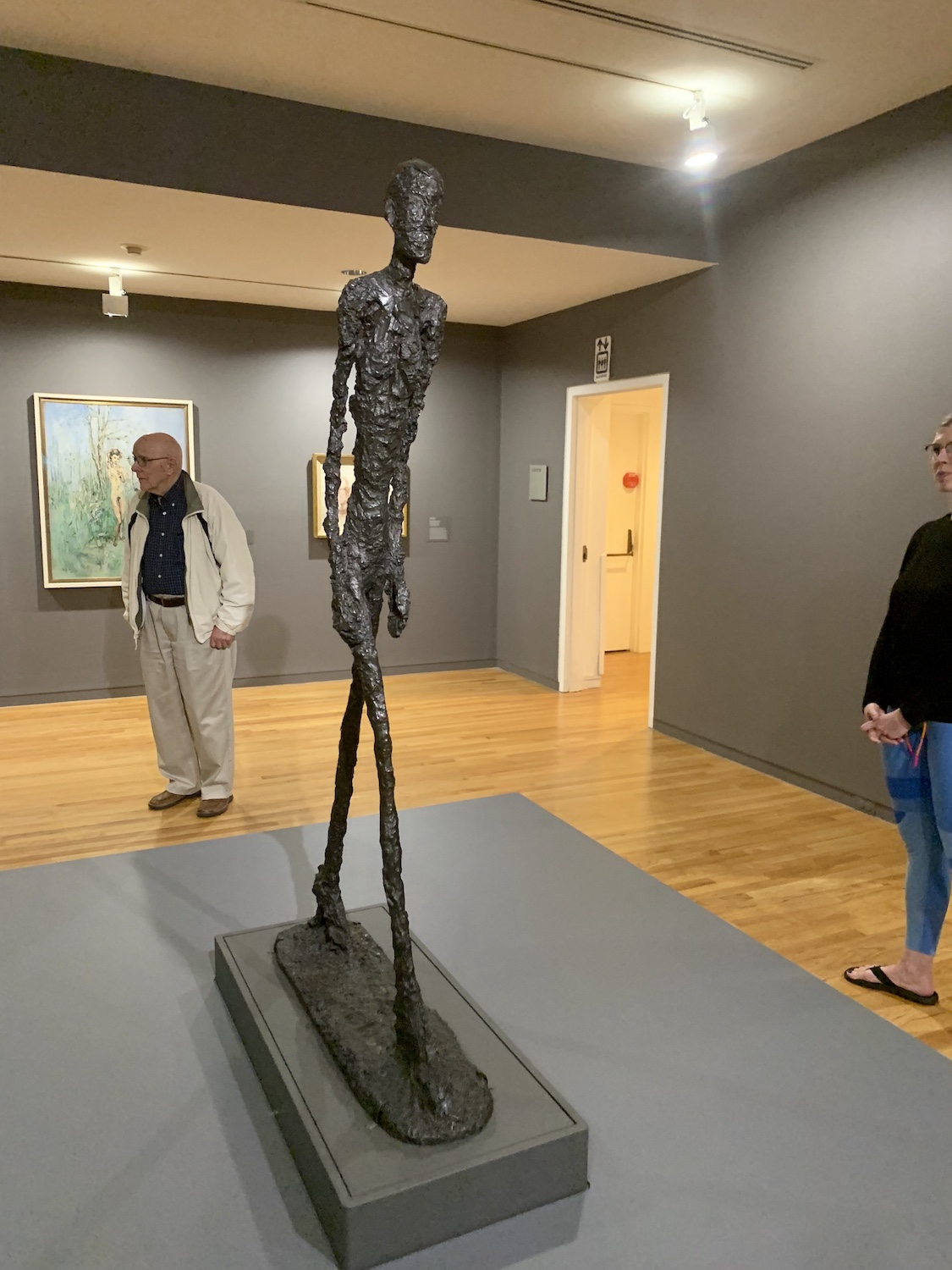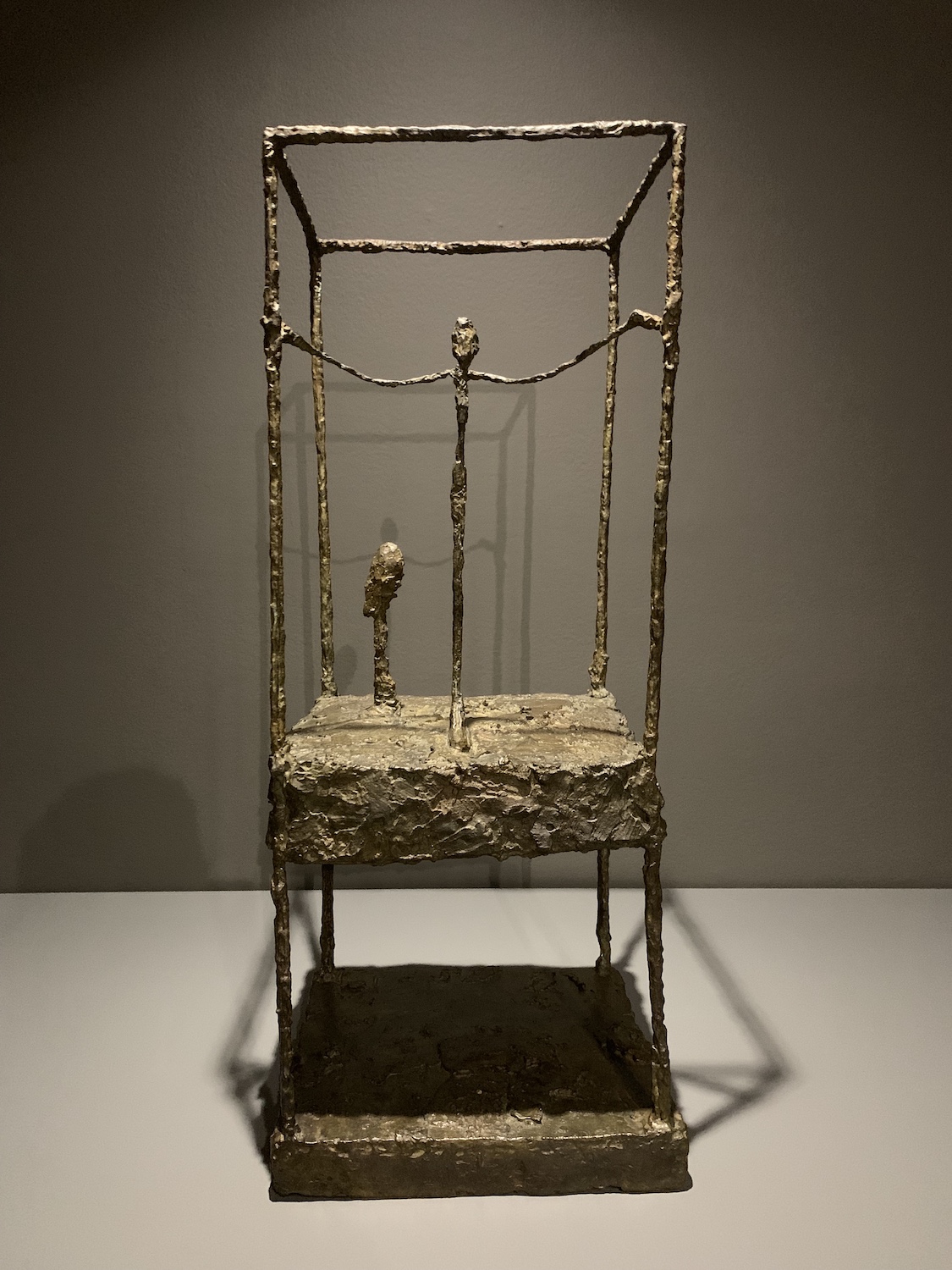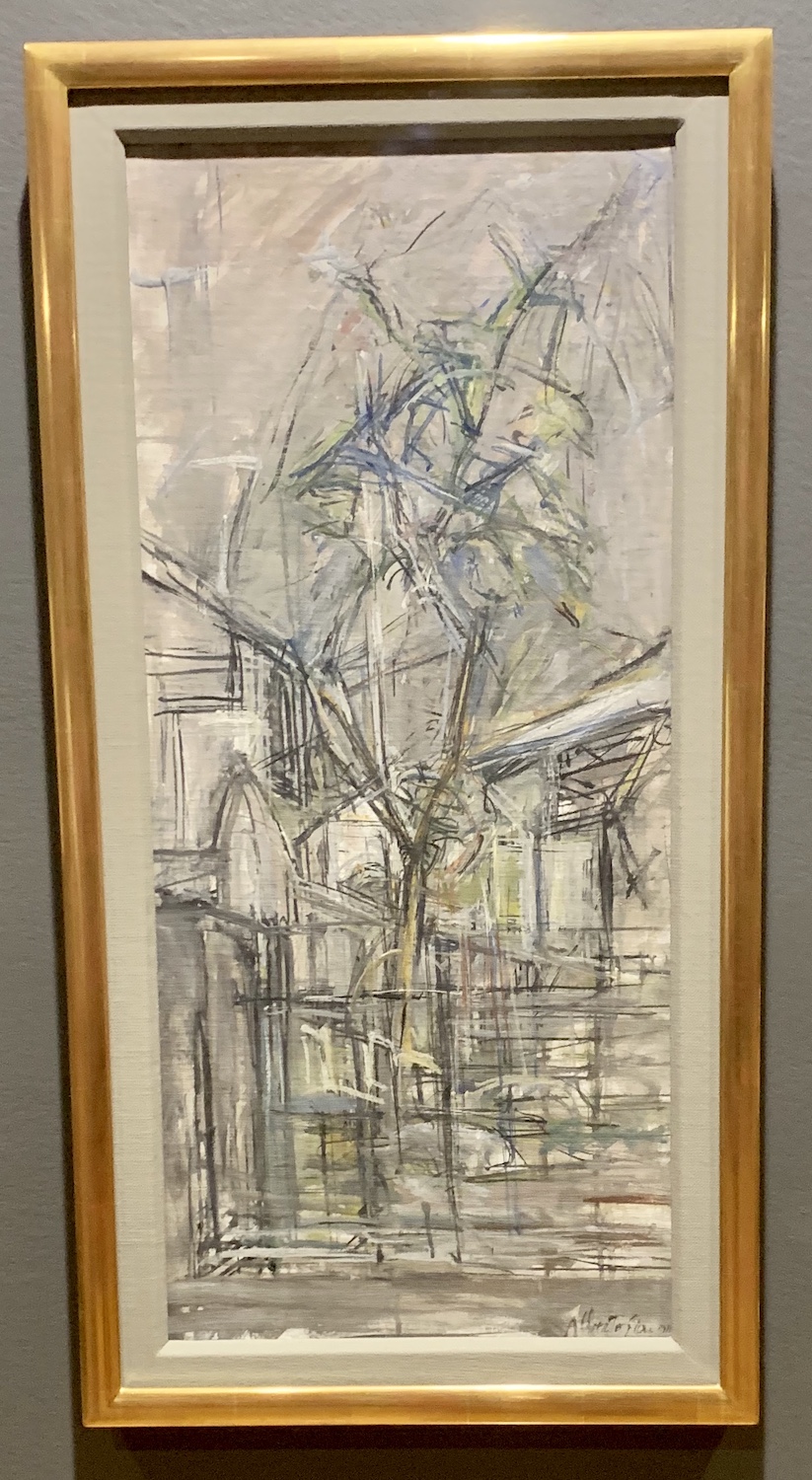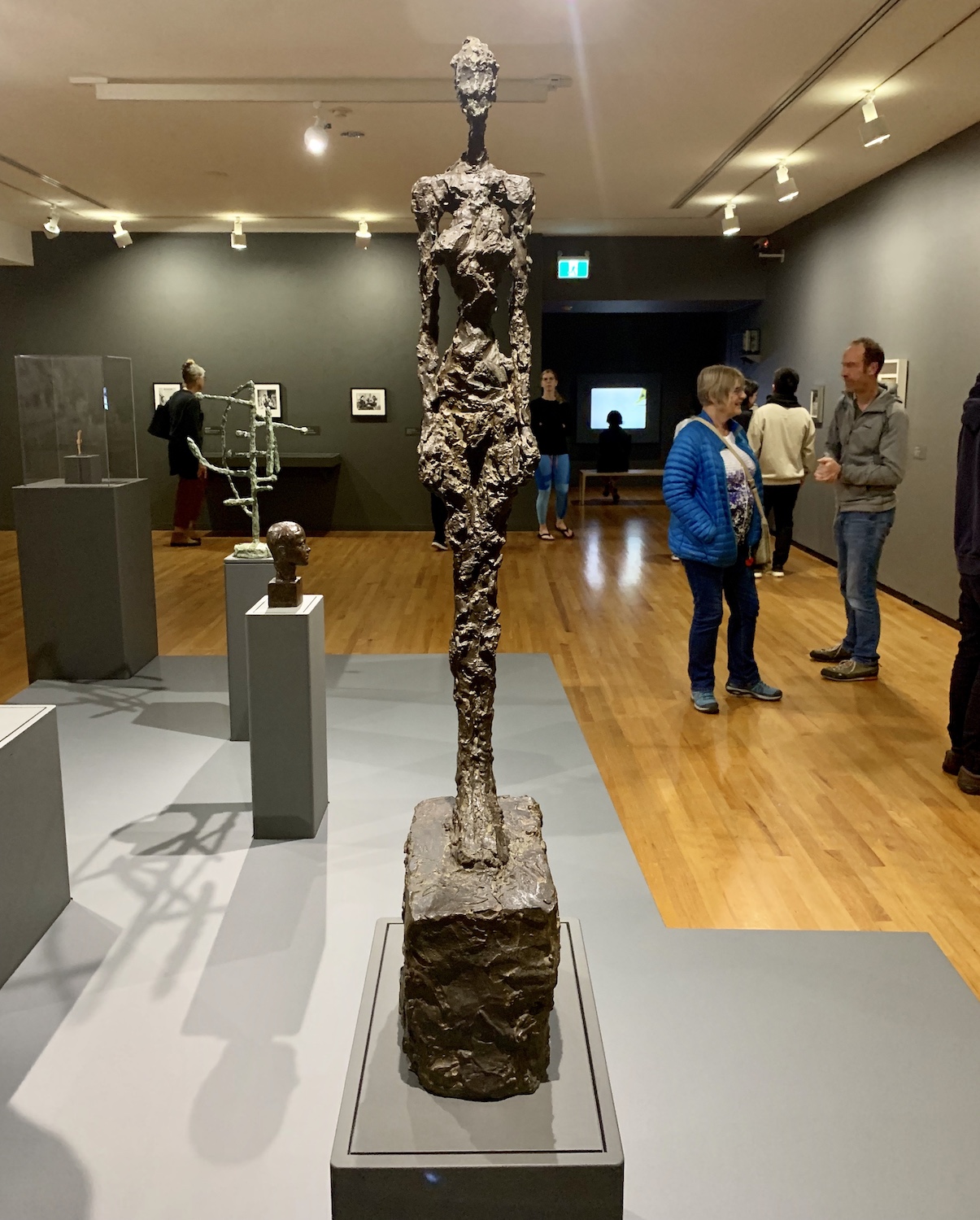Continuing our emergent series on modern masters,i let’s take a walk through (and around) Alberto Giacometti:ii A Line Through Time, on now until September 29th at the Vancouver Art Gallery (VAG).iii Going through the exhibit in reverse (because “normal” is for suckers), let’s start with this slender bean pole of a female figure :
Tall Figure, 1948-49.iv Like all of Giacometti’s women, she’s standing (his male figures are always walking), and her feet are comically large, and yet her feet are the only part of her body that’s in proper proportion to her height. The rest of the figure is stripped down, beneath the flesh, beneath even the bones, to the shadow of the muse. The result is dark, unsatisfied, compulsive, and essentially tragic, as was Giacometti’s style of expression and no doubt his worldview.v
Man Walking (Version 1), 1960. Many of Giacometti’s male sculptures were modelled on his younger brother Diego, for whom he clearly had great affection, but this obviously did little to brighten the sullen, solitary mood of the now-iconic walking silhouette. The existential angst is manifest. The post-war wandering, the loneliness shines through the blackened bronze figure.
La Cage (Première Version), 1950.vi With Heavens above and Hades below, life is Purgatory. Hands wrapped around the iron bars containing us, there’s room to step between them, but to do so is also to step into the abyss.
The Tree, 1950. Much less celebrated are Giacometti’s paintings. Yet the inspiration that the artist drew from the leaning, slender articulations of trees is reflected continually in his human figures. The urban trees, particularly those of Alberto’s home in Stampa, Switzerland, inspired particular reflection and study, as seen in this exceptional, and exceptionally fractured, painting.
Standing Woman, 1958-59. The closing (opening) feature of the exhibition is demure, like all of Giacometti’s women. She is also revealed, emotional, and somewhat substantial, at least compared to the almost invisibly thin figures like Tall Figure, 1948-49. The neck here is long like a giraffe’s with a nearly faceless visage perched atop, mounted on a shrunken head manipulated mostly by hand (often with cigarette cradled between the same clay-caked fingers). Giacometti used almost no tools, perhaps a 3″ blade at most, to construct his sculptures. He worked tirelessly, restlessly, and what looks decidedly unscientifically, apparently in acceptance of the imperfection he felt compelled to create and endlessly refine, year after year.
Why wasn’t he more scientific ? Perhaps because the science of his lifetime had been used to create machines of such vast and incalculable carnage. His process was therefore a rejection of this supposed panacea of “rationality.” Giacometti’s sculptures, at their best, represent the persistent and uncrushable humanity in each of us, even as it may be beaten down and withered away during such brutal periods as Europe between 1914-1945.vii What’s left is the essential, the lost, the wandering, the existent, and the tormented but undeniable good. Not even the almighty Science can completely destroy our vital inner cores, no matter how close it might come or how hard it might try.
We aren’t entirely good. But part of us is.
Sad, but true.
___ ___ ___
- The last episode in our series was Rothko @ MOCA. ↩
- Giacometti lived from 1901-1966. He was grew up in the southeast of Switzerland adjacent to the Italian border and spent his adult life in Paris. ↩
- Unlike last visit’s Murakami blitzkrieg, I actually had a couple hours to take in this exhibit. It only took about an hour though because that’s about all the Dracula-inspired soundtrack I could tolerate, but it was still plenty of time to contemplate this particular sculptor’s lot. ↩
- Due to the truly petite proportions of the sculptures, I’ve uploaded slightly higher resolution photos than usual. Click on the photos to see more detail. ↩
- On the spectrum of tragic to comedic, Giacometti, like Rothko, is resolutely on the tragic end of the scale. Robert Rauschenberg, who is also on exhibition at VAG, is at the opposite end, the comedic end, much like Virgil Abloh or Marcel Duchamp.
Of course, a well-rounded “sculpture garden” would ideally feature both sorts and much in between. ↩
- This work auctioned at Sotheby’s in 2016 for GBP 1.745 mn and it’s not even unique, it’s one of twelve! ↩
- The popular conception of today’s world is similarly “dire” to that of Giacometti’s. Climate! Money printing! Racism! Narcissism! And yet our material well-being is phenomenal, our freedoms are enviable, and things are generally pretty fantastic despite everyone (at least the “woke,” “informed,” “smart,” etc.) being largely miserable about the whole thing.
Or maybe it’s just great here in Canada and that’s why everyone wants to immigrate here! Not that you should take my highfalutin opinion for it, the cab drivers from Eritrea (etc) that I talk to regularly are similarly over-the-moon with our good fortune in this land of opportunity. The Iranians ? Maybe less so, but who asked them ? ↩

